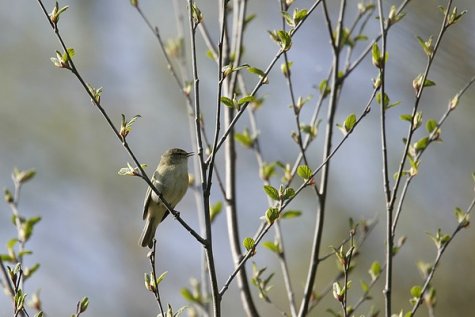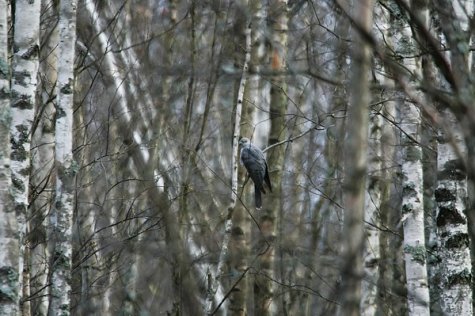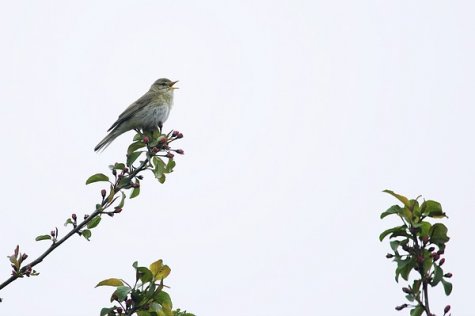Forest birds and their song - cuckoo
| Cuckoo |
Kägu |
You are missing some Flash content that should appear here! Perhaps your browser cannot display it, or maybe it did not initialize correctly.
|
Most common forest birds,
Based on spot monitoring survey in Kaarepere forest, 1984-1992 |
In how many spots á 5 minutes must you listen to hear the species?
|
How many times is the bird heard during 5 mins.?
|
LK presentation order (non-migrant* + migrant birds)
|
|
Chaffinch - Metsvint
|
1
|
2,2
|
Great tit*
|
|
Willow warbler - Salu-lehelind
|
2
|
0,8
|
Goldcrest*
|
|
Wood warbler - Mets-lehelind
|
2
|
0,8
|
Great spotted woodpecker*
|
|
Chiff-chaff - Väike-lehelind
|
2
|
0,8
|
Treecreeper*
|
|
Tree pipit - Metskiur
|
2
|
0,7
|
Jay*
|
|
Robin - Punarind
|
2
|
0,6
|
Blackbird
|
|
Song thrush - Laulurästas
|
2
|
0,5
|
Chaffinch
|
|
Blackcap - Mustpea-põõsalind
|
2
|
0,5
|
Wren
|
|
Pied flycatcher - Must-kärbsenäpp
|
3
|
0,4
|
Song thrush
|
|
Wren - Käblik
|
3
|
0,4
|
Robin
|
|
Cuckoo - Kägu
|
3
|
0,4
|
Chaffinch
|
|
Garden warbler - Aed-põõsalind
|
4
|
0,3
|
Redwing thrush
|
|
Great tit - Rasvatihane
|
4
|
0,3
|
Tree pipit
|
|
Blackbird - Musträstas
|
4
|
0,3
|
Chiff-chaff
|
|
Goldcrest - Pöialpoiss
|
4
|
0,3
|
Willow warbler
|
|
Redwing - Vainurästas
|
4
|
0,3
|
Pied flycatcher
|
|
Collared dove - Kaelustuvi
|
4
|
0,3
|
Cuckoo
|
|
Siskin - Siisike
|
5
|
0,2
|
Wood warbler
|
|
Willow tit - Põhjatihane
|
5
|
0,2
|
Blackcap
|
|
Dunnock - Võsaraat
|
5
|
0,2
|
Garden warbler
|
|
Greater spotted woodpecker - Suur-kirjurähn
|
5
|
0,2
|
|
|
Treecreeper - Porr
|
Observed each year
|
||
|
Bullfinch - Leevike
|
Observed each year
|
Spot monitoring 20 obs. spots
|
|
|
Jay - Pasknäär
|
Observed each year
|
á 5 minutes
|
| Pied flycatcher | Must - kärbsenäpp |
You are missing some Flash content that should appear here! Perhaps your browser cannot display it, or maybe it did not initialize correctly.
The willow warbler arrives at the end of April or in the beginning of May and sings until early July. It is one of our most numerous songbirds that can be heard in all kinds of tree stands, copses, wooded meadows and parks. The round nest is on the ground in the grass layer, in moss or sheltered by a bush. The willow warbler hides among the leaves and doesn’t catch the eye, but its song is clear and resounding "a whistling strophe of soft melodious minor key notes, descending at the end and remotely reminding of the song of the chaffinch but much gentler". In the morning it starts singing 45-70 minutes before sunrise and in the evening stops about half an hour after sunset.
You are missing some Flash content that should appear here! Perhaps your browser cannot display it, or maybe it did not initialize correctly.

| Chiff-chaff | Väike-lehelind |
You are missing some Flash content that should appear here! Perhaps your browser cannot display it, or maybe it did not initialize correctly.
Read about and listen to birds introduced previously here:
http://www.looduskalender.ee/en/node/10164
The list of all described birds is in the right-hand column in the table above











